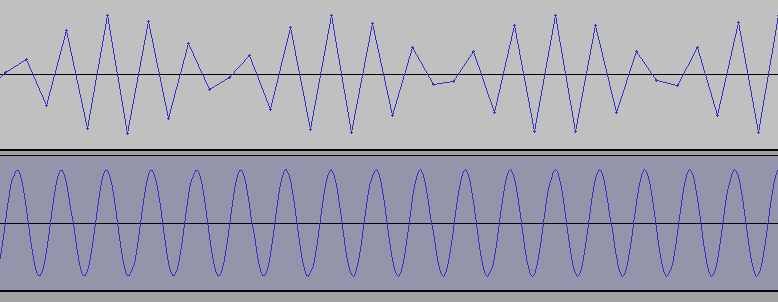bassistTech
Member
Here's the code, stripped down to the bare bones, running on Teensy 3.2 with the Audio Shield:
Here's the output, just one scope sweep, cellphone picture of ancient and venerable scope:

I'm seeing a modulation of the sinewave, don't know if this is an expected artifact, or something wrong.
Code:
#include <Audio.h>
#include <Wire.h>
#include <SPI.h>
AudioSynthWaveformSineHires sine_hires1;
AudioOutputI2S i2s1;
AudioConnection patchCord1(sine_hires1, 0, i2s1, 0);
AudioConnection patchCord2(sine_hires1, 1, i2s1, 1);
AudioControlSGTL5000 sgtl5000_1;
void setup() {
AudioMemory(20);
sgtl5000_1.enable();
sgtl5000_1.volume(0.8);
sine_hires1.amplitude(0.9);
sine_hires1.frequency(20000);
}
void loop() {
}Here's the output, just one scope sweep, cellphone picture of ancient and venerable scope:

I'm seeing a modulation of the sinewave, don't know if this is an expected artifact, or something wrong.




